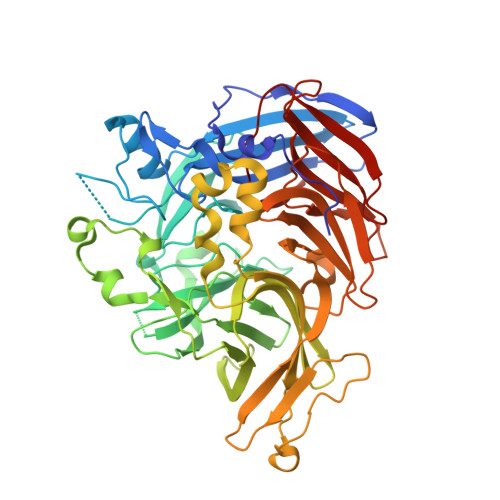Catalytic mechanism of a retinoid isomerase essential for vertebrate vision.
Kiser, P.D., Zhang, J., Badiee, M., Li, Q., Shi, W., Sui, X., Golczak, M., Tochtrop, G.P., Palczewski, K.(2015) Nat Chem Biol 11: 409-415
- PubMed: 25894083
- DOI: https://doi.org/10.1038/nchembio.1799
- Primary Citation of Related Structures:
4RSC, 4RSE - PubMed Abstract:
Visual function in vertebrates is dependent on the membrane-bound retinoid isomerase RPE65, an essential component of the retinoid cycle pathway that regenerates 11-cis-retinal for rod and cone opsins. The mechanism by which RPE65 catalyzes stereoselective retinoid isomerization has remained elusive because of uncertainty about how retinoids bind to its active site. Here we present crystal structures of RPE65 in complex with retinoid-mimetic compounds, one of which is in clinical trials for the treatment of age-related macular degeneration. The structures reveal the active site retinoid-binding cavity located near the membrane-interacting surface of the enzyme as well as an Fe-bound palmitate ligand positioned in an adjacent pocket. With the geometry of the RPE65-substrate complex clarified, we delineate a mechanism of catalysis that reconciles the extensive biochemical and structural research on this enzyme. These data provide molecular foundations for understanding a key process in vision and pharmacological inhibition of RPE65 with small molecules.
- Department of Pharmacology, Cleveland Center for Membrane and Structural Biology, School of Medicine, Case Western Reserve University, Cleveland, Ohio, USA.
Organizational Affiliation:



















